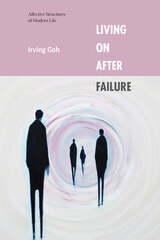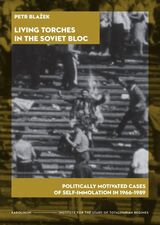3 books about Reyes, Adelaida
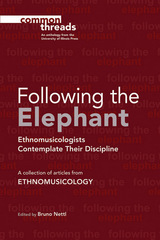
Following the Elephant
Ethnomusicologists Contemplate Their Discipline
Edited by Bruno Nettl: A collection of articles from Ethnomusicology
University of Illinois Press, 2017
In Following the Elephant, Bruno Nettl edits articles drawn from fifty years of the pioneering journal Ethnomusicology. The roster of acclaimed scholars hail from across generations, using other works in the collection as launching points for dialogues on the history and accomplishments of the field. Nettl divides the collection into three sections. In the first, authors survey ethnomusicology from perspectives that include thoughts on defining and conceptualizing the field and its concepts. The second section offers milestones in the literature that critique major works. The authors look at what separates ethnomusicology from other forms of music research and discuss foundational issues. The final section presents scholars considering ethnomusicology--including recent trends--from the perspective of specific, but abiding, strands of thought. Contributors: Charlotte J. Frisbie, Mieczylaw Kolinski, Gerhard Kubik, George List, Alan P. Merriam, Bruno Nettl, David Pruett, Adelaida Reyes, Timothy Rice, Jesse D. Ruskin, Kay Kaufman Shelemay, Gabriel Solis, Jeff Todd Titon, J. Lawrence Witzleben, and Deborah Wong
[more]
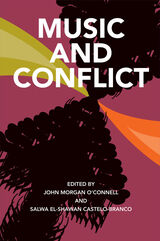
Music and Conflict
Edited by John Morgan O'Connell and Salwa El-Shawan Castello-Branco
University of Illinois Press, 2010
This volume charts a new frontier of applied ethnomusicology by highlighting the role of music in both inciting and resolving a spectrum of social and political conflicts in the contemporary world. Examining the materials and practices of music-making, contributors detail how music and performance are deployed to critique power structures and to nurture cultural awareness among communities in conflict.
The essays here range from musicological studies to ethnographic analyses to accounts of practical interventions that could serve as models for conflict resolution. Music and Conflict reveals how musical texts are manipulated by opposing groups to promote conflict and how music can be utilized to advance conflict resolution. Speaking to the cultural implications of globalization and pointing out how music can promote a shared musical heritage across borders, the essays discuss the music of Albania, Azerbaijan, Brazil, Egypt, Germany, Indonesia, Iran, Ireland, North and South Korea, Uganda, the United States, and the former Yugoslavia. The volume also includes dozens of illustrations, including photos, maps, and musical scores.
Contributors are Samuel Araujo, William Beeman, Stephen Blum, Salwa El-Shawan Castelo-Branco, David Cooper, Keith Howard, Inna Naroditskaya, John Morgan O'Connell, Svanibor Pettan, Anne K. Rasmussen, Adelaida Reyes, Anthony Seeger, Jane C. Sugarman, and Britta Sweers.
[more]
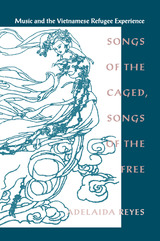
Songs of the Caged, Songs of the Free
Music and the Vietnamese Refugee Experience
Adelaida Reyes
Temple University Press, 1999
Sad songs and love songs. For Vietnamese refugees who fled Vietnam after the 1975 takeover by the Viet Cong, the predominant music of choice falls into these two general categories rather than any particular musical genre. In fact, Adelaida Reyes discovers, music that exiles call "Vietnamese music" -- that is, music sung in Vietnamese and almost exclusively written before 1975 -- includes such varied influences as Western rock, French-derived valse, Latin chacha, tango, bolero, an d paso doble.
The Vietnamese refugee experience calls attention to issues commonly raised by migration: the redefinition of group relations, the reformulation of identity, and the reconstruction of social and musical life in resettlement. Fifteen years ago, Adelaida Reyes began doing fieldwork on the musical activities of Vietnamese refugees. She entered the emotion-driven world of forced migrants through expressive culture; learned to see the lives of refugee-resettlers through the music they made and enjoyed; and, in turn, gained a deeper understanding of their music through knowledge of their lives.
In Songs of the Caged, Songs of the Free, Reyes brings history, politics, and decades of research to her study of four resettlement communities, including refugee centers in Palawan and Bataan; the early refugee community in New Jersey; and the largest of all Vietnamese communities -- Little Saigon, in southern California's Orange County.
Looking closely at diasporic Vietnamese in each location, Reyes demonstrates that expressive culture provides a valuable window into the refugee experience. Showing that Vietnamese immigrants deal with more than simply a new country and culture in these communities, Reyes considers such issues as ethnicity, socio-economic class, and differing generations. She considers in her study music of all kinds -- performed and recorded, public and private -- and looks at music as listened to and performed by all age groups, including church music, club music, and music used in cultural festivals. Moving from traditional folk music to elite and modern music and from the recording industry to pirated tapes. Reyes looks at how Vietnamese in exile struggled, in different ways, to hold onto a part of their home culture and to assimilate into their new, most frequently American, culture.
Songs of the Caged, Songs of the Free will attract the attention of readers in Asian American studies, Asian studies, music, and ethnomusicology.
The Vietnamese refugee experience calls attention to issues commonly raised by migration: the redefinition of group relations, the reformulation of identity, and the reconstruction of social and musical life in resettlement. Fifteen years ago, Adelaida Reyes began doing fieldwork on the musical activities of Vietnamese refugees. She entered the emotion-driven world of forced migrants through expressive culture; learned to see the lives of refugee-resettlers through the music they made and enjoyed; and, in turn, gained a deeper understanding of their music through knowledge of their lives.
In Songs of the Caged, Songs of the Free, Reyes brings history, politics, and decades of research to her study of four resettlement communities, including refugee centers in Palawan and Bataan; the early refugee community in New Jersey; and the largest of all Vietnamese communities -- Little Saigon, in southern California's Orange County.
Looking closely at diasporic Vietnamese in each location, Reyes demonstrates that expressive culture provides a valuable window into the refugee experience. Showing that Vietnamese immigrants deal with more than simply a new country and culture in these communities, Reyes considers such issues as ethnicity, socio-economic class, and differing generations. She considers in her study music of all kinds -- performed and recorded, public and private -- and looks at music as listened to and performed by all age groups, including church music, club music, and music used in cultural festivals. Moving from traditional folk music to elite and modern music and from the recording industry to pirated tapes. Reyes looks at how Vietnamese in exile struggled, in different ways, to hold onto a part of their home culture and to assimilate into their new, most frequently American, culture.
Songs of the Caged, Songs of the Free will attract the attention of readers in Asian American studies, Asian studies, music, and ethnomusicology.
[more]
READERS
Browse our collection.
PUBLISHERS
See BiblioVault's publisher services.
STUDENT SERVICES
Files for college accessibility offices.
UChicago Accessibility Resources
home | accessibility | search | about | contact us
BiblioVault ® 2001 - 2025
The University of Chicago Press


